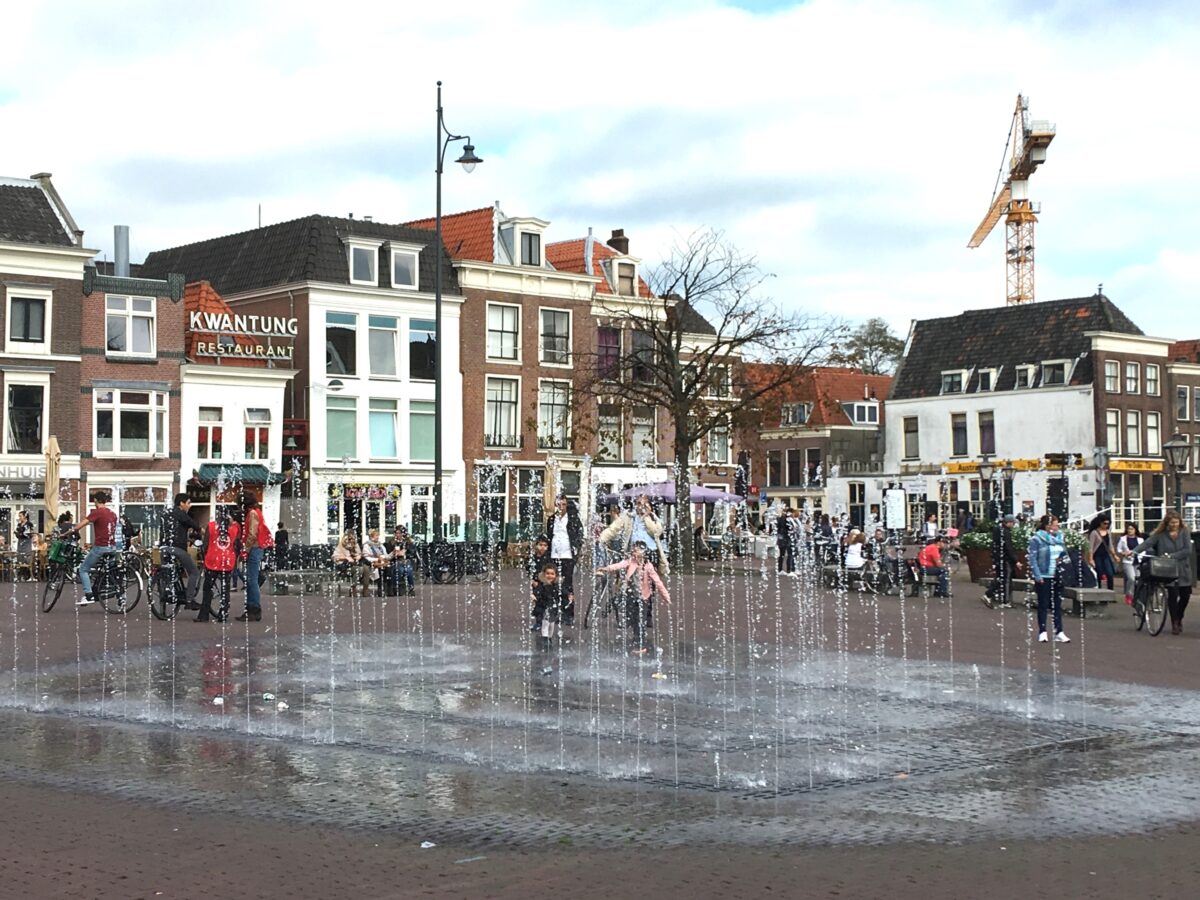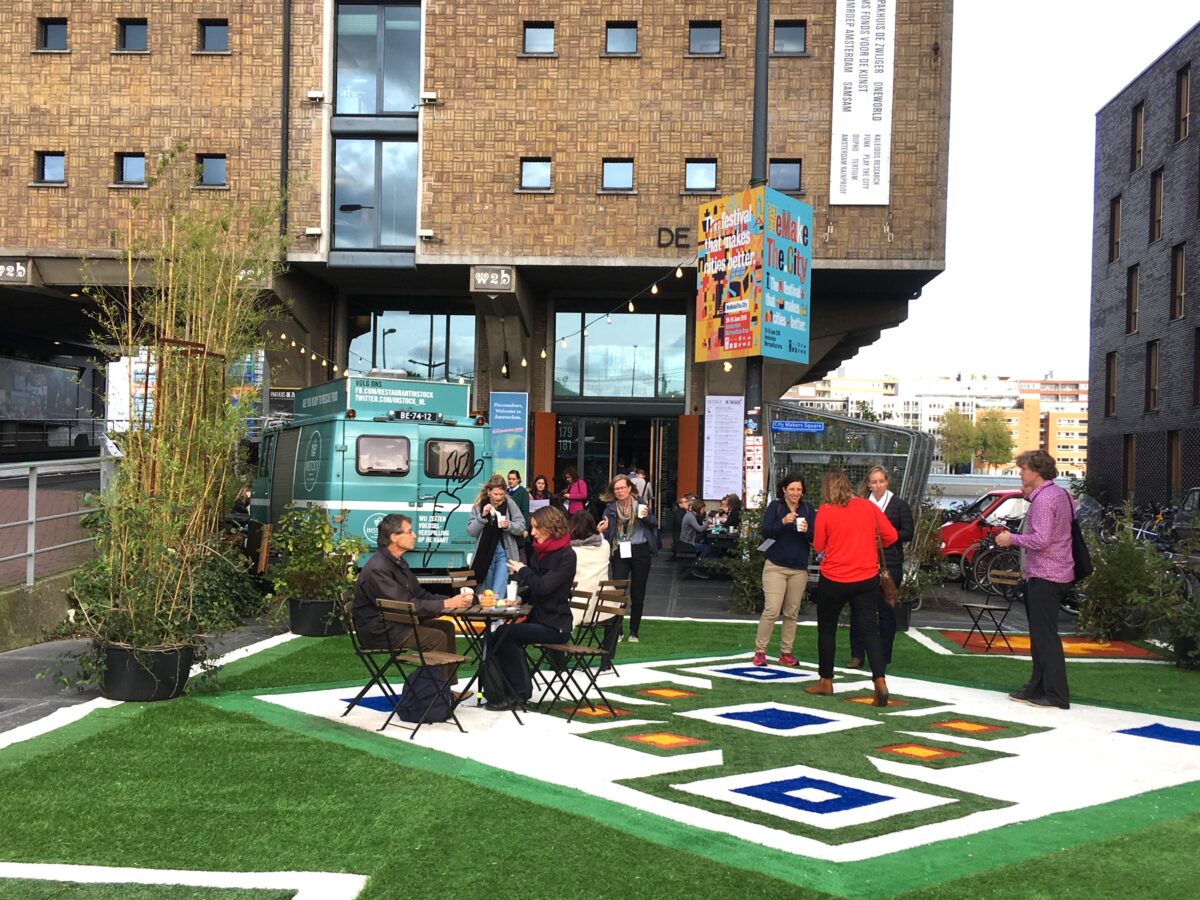
Placemaking and the Public Realm: Bringing it all Together
Jen Heal, Deputy Chief Executive of the Design Commission for Wales
The public realm is likely the first thing that comes to mind when many think of placemaking. A vibrant public square, a bustling high street or a fun-filled local park are just some of the images that spring to mind and are indeed some of the aims of our focus on placemaking. The public realm has many functions to perform and can be a place of delight, but it cannot be considered in isolation. All six of the Placemaking Wales Charter principles are interrelated and need to work together, but the success, or otherwise, of this manifests itself in the public realm.
Conditions to enable a positive public realm
Embedding placemaking into planning policy at the national level through Planning Policy Wales and Future Wales recognises that important decisions that will influence the success of the public realm within a town centre, neighbourhood centre or residential streets are made well in advance of the design of the space itself.
The location of development, availability of choice of movement modes and mix of uses will set the conditions in terms of levels of traffic, opportunities for walking and cycling, and amount of parking needed, all of which influence the amount of space available for public life and the quality of this space. If development is isolated, with no mix of uses and limited opportunities for public transport and active travel, more space will be needed to store and move cars around, fewer people will be out and about and the ‘life’ of the place will be impaired.
Conversely, if new development is situated close to existing facilities that people can easily access via active travel or public transport, or if new development has sufficient density to provide a mix of uses itself, then good design can manage the impact of cars on the environment, and there is potential for the streets and spaces to come alive. More people will have the opportunity to bump into and get to know others in their community, children will have more opportunities to play outside and the conditions will enable healthier movement choices.
Out of the six Charter principles, this leaves people and community and identity. These are two essential ingredients that should inform the design of the public realm to give it distinctiveness, inclusiveness and ensure it meets the needs of the community that will inhabit it.
Public realm as a forum for involvement
The latter two principles above emphasise the role of community engagement in the design of the public realm. Public realm interventions provide the space to test ideas and make changes in collaboration with the community. The prominent placemaking organisation, Project for Public Spaces, has a range of useful resources for placemaking in the public realm with easy to remember headings, such as:
- The Power of 10 – the idea that there should be many (e.g. ten) different things for people to do in a public space[1], or
- Lighter Quicker Cheaper – the promotion of interventions that are implemented quickly to help test ideas and demonstrate how changing a space can help to create a place[2].
It seems that the latter is something that we are not yet very good at in Wales. Whether it is because of the real or perceived barrier of rules and processes to navigate, a lack of skills in this type of engagement or risk adversity, we don’t seem to be able to implement such projects at any kind of pace or scale. Covid recovery interventions exhibited some of this energy, but that seems to have quickly faded away.

I was struck by the example of Milan’s Piazze Aperte ‘Open Squares’ initiative[3], where the city used temporary interventions as a mechanism for engagement and to test ideas before more permanent change. There was an open call to all citizens to identify spaces in the city that could be improved. They used paint to define the public space and put in street furniture to start to establish activity within the spaces and worked with local people on events within the spaces. The feedback from these temporary actions was used to shape more permanent interventions, but the impact was much more immediate: “Every time we closed a street to traffic, children popped up”[4].

An ongoing challenge
The benefits of public realm improvements are numerous, such as encouraging walking and cycling, integrating green and blue infrastructure to manage and mitigate climate change impacts, and providing comfortable, safe and pleasant places to interact with others, thus reducing social isolation. However, that doesn’t mean it is easy. Two particular challenges seem to be prevalent – the cost of maintenance and out of date approaches to highway design. The former threatens the integration of the most basic elements, such as street trees, because there aren’t sufficient budgets or resources to look after them. The latter is an ongoing issue despite a decade and a half of guidance on the subject through Manual for Streets. Neither of these challenges should be something we shy away from tackling from a national level down to each case to deliver the benefits that a good public realm provides.
The pattern of our lives seems to be increasingly individualistic. However, the public realm is still a forum for people to come together, meet and share a common experience of a place. The decisions we make every step of the way, from where we develop down to the kerb detail, will impact how successful these spaces are and how positively they can contribute to our lives.
[1] https://www.pps.org/article/the-power-of-10
[2] https://www.pps.org/article/lighter-quicker-cheaper
[3] https://globaldesigningcities.org/update/piazze_aperte_report-en/
[4] https://twitter.com/fietsprofessor/status/1605946251286962177?lang=en-GB
Credits
Image 3: cities-today.com

